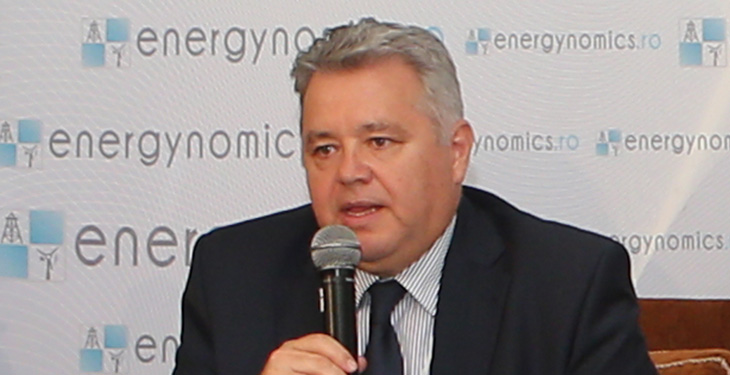The process of liberalization of the natural gas price produced in Romania, for the consumption of the population and for the heating plants supplying heat to the population is under way, and from April 1st, all the provisions of the emergency ordinance 64/2016 will enter into force, confirmed the ANRE President Niculae Havrileţ in an intervention at Radio Romania Actualitati. The announcement came to end speculations about liberalization, amid the discussions within the Parliament and the warnings addressed by the major gas suppliers.
Manufacturers will be forced to trade on the centralized markets at least 30% of the production for the gas year commencing on April 1st, under the threat of a sanction of up to 1% of their annual turnover, if they do not comply with the legal provisions in this regard. ANRE decided to increase by 5% the regulated price for gas for the population from April, as a preventive measure in case during the next winter the purchase prices of suppliers would increase substantially. This is an unlikely prospect, said Havrileţ, who explained that, at the end of the gas year, the Authority will assess the market evolution and will decide to what extent, further increases (or decreases) of the prices would be necessary, in order to recognize within the regulated prices the variations recorded on the market.
Niculae Havrileţ has also announced that on April 1st, ANRE will make publicly available an online price calculator and comparator to enable consumers, including the domestic ones, to identify the best supply offer for their individual profile.
The Emergency Ordinance 64 amending the Energy Law which was adopted at the end of 2016 changes the market conditions, mainly by eliminating the administrative price for the gases produced in Romania and by forcing the gas manufacturers and gas suppliers to use the centralized markets for 30% of the volumes produced or traded. You can find further details in the article published by energynomics.ro in September 2016, after the event in which Aristotel Jude, then Secretary of State in the Ministry of Energy, presented the legislative initiative.
The liberalization is supported by the gas producers and mandatory because of Romania’s status as an EU member. Repeatedly postponed, the process would allow large producers (Romgaz and Petrom) and other companies already operating or interested to start new projects of exploration and exploitation in Romania, to sell gas at a market price, determined by the supply and demand. Companies could register higher profits if they sell gas at higher prices than the 60 lei MWh level imposed by the state, today. Also, the manufacturers will gain more flexibility for situations in which the gas import prices would come down (again), under the established administrative level. In recent years, mainly the state-owned company Romgaz has recorded production cuts and losses of market share because it could not compete with the cheap imported gas.
At the public debates in the recent days, the major suppliers opposed the application of GEO 64/2016, arguing that a higher price of purchasing would reduce their profits or lead to unpredictable increases of the final price, if the acquisiton costs would be transferred to the population. During the program produced by Radio Romania Actualitati, the President of ANRE explained that suppliers will recover the cost of acquisition – through a process spread over several years, if the rises on the stock exchange would be very high – once the Authority will analyze the evolution from the previous year and will recognizes these increases, in the regulated price, based on the invoices provided by the suppliers. Havrileţ said that the share of the cost of gas within the final invoice is about 60%, the rest being mainly distribution and supply tariffs. For example, an increase in the purchase price on the centralized markets by 10%, could mean an increase of 6% in the final invoice of the consumer.
Present within the same program, Silvia Vlăsceanu, executive director of ACUE stressed out that one can not say what will be the price determined by the market, given that Romania does not have a functional gas market: the centralized platforms are lacking essential trading tools, there isn’t a clearing house in function, the reduced liquidity is making transactions completely irrelevant, and two players are categorically dominating the production sector, with a combined market share of over 97%. In previous interventions, the representatives of the major gas suppliers have warned that the gas price could increase by 45% next winter.
